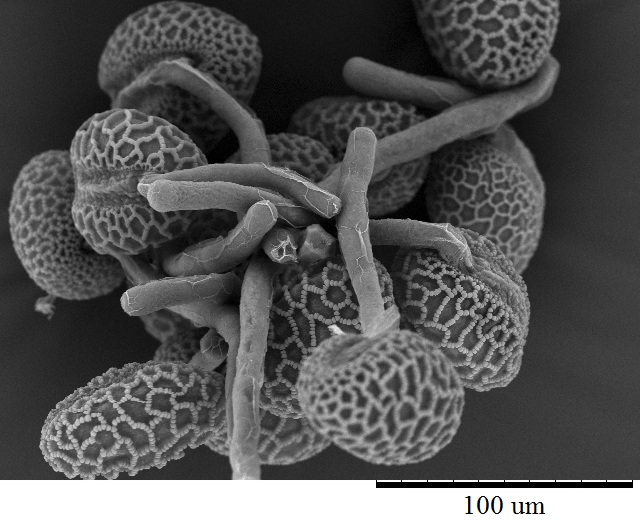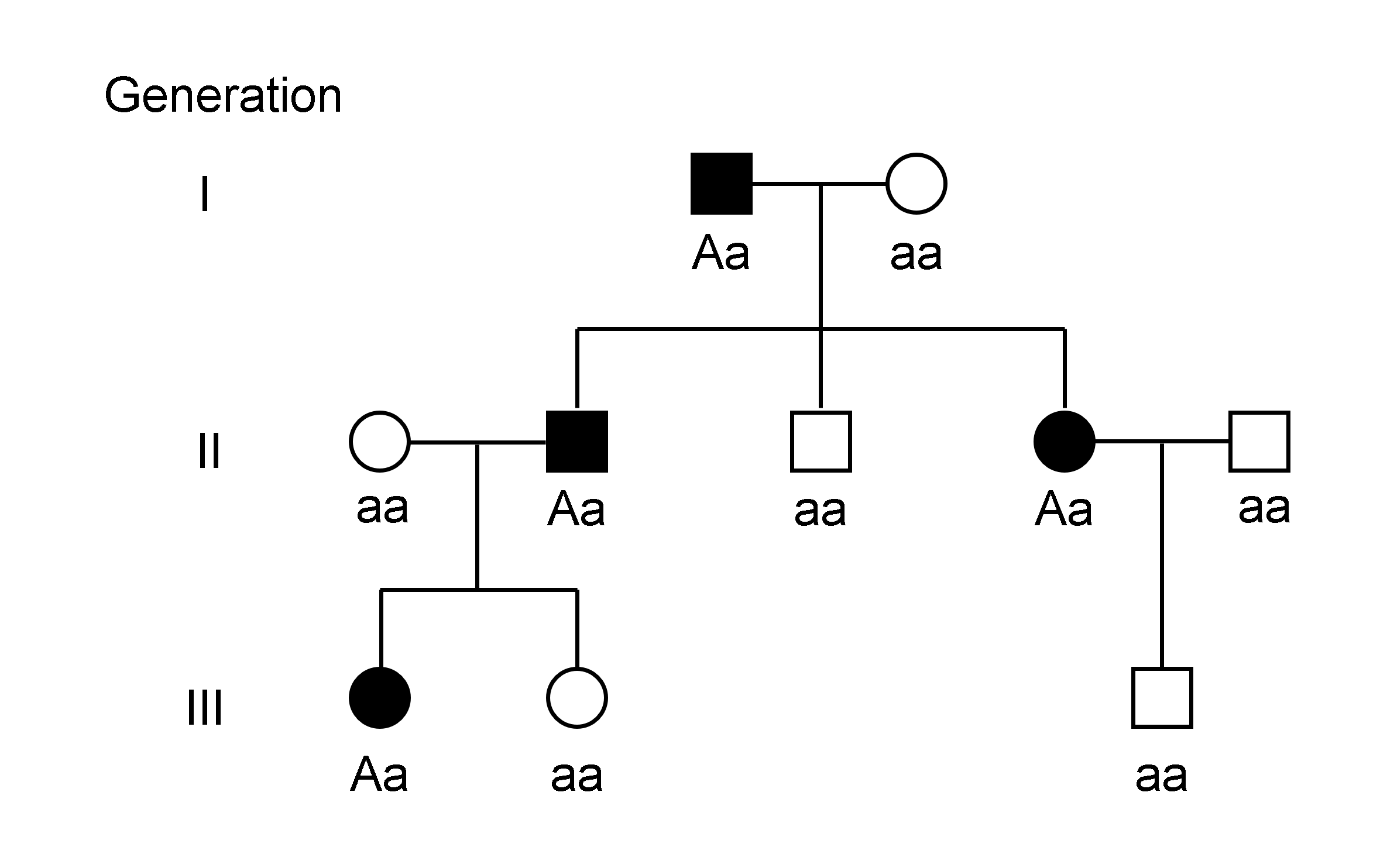|
Certation
In botany, certation is competition in the style between pollen tubes attempting to fertilise the ovules there. If different pollen genotypes have different success rates then the genotype frequencies of the fertilised seeds will deviate from that which would occur if all pollen was equally successful. This process has been proposed to explain female-biased sex ratios in some dioecious plants, if female-determining pollen (which causes seeds to be female) is more successful than male-determining pollen (which causes seeds to be male), though other mechanisms whereby the sex ratio The sex ratio (or gender ratio) is usually defined as the ratio of males to females in a population. As explained by Fisher's principle, for evolutionary reasons this is typically about 1:1 in species which reproduce sexually. Many species devia ... may be skewed away from 50:50 are also known. References {{Reflist Plant reproductive system Plant morphology Plant sexuality ... [...More Info...] [...Related Items...] OR: [Wikipedia] [Google] [Baidu] |
Botany
Botany, also called plant science (or plant sciences), plant biology or phytology, is the science of plant life and a branch of biology. A botanist, plant scientist or phytologist is a scientist who specialises in this field. The term "botany" comes from the Ancient Greek word (') meaning " pasture", "herbs" " grass", or "fodder"; is in turn derived from (), "to feed" or "to graze". Traditionally, botany has also included the study of fungi and algae by mycologists and phycologists respectively, with the study of these three groups of organisms remaining within the sphere of interest of the International Botanical Congress. Nowadays, botanists (in the strict sense) study approximately 410,000 species of land plants of which some 391,000 species are vascular plants (including approximately 369,000 species of flowering plants), and approximately 20,000 are bryophytes. Botany originated in prehistory as herbalism with the efforts of early humans to identify – a ... [...More Info...] [...Related Items...] OR: [Wikipedia] [Google] [Baidu] |
Style (botany)
The stigma () is the receptive tip of a carpel, or of several fused carpels, in the gynoecium of a flower. Description The stigma, together with the style and ovary (typically called the stigma-style-ovary system) comprises the pistil, which is part of the gynoecium or female reproductive organ of a plant. The stigma itself forms the distal portion of the style, or stylodia, and is composed of , the cells of which are receptive to pollen. These may be restricted to the apex of the style or, especially in wind pollinated species, cover a wide surface. The stigma receives pollen and it is on the stigma that the pollen grain germinates. Often sticky, the stigma is adapted in various ways to catch and trap pollen with various hairs, flaps, or sculpturings. The pollen may be captured from the air (wind-borne pollen, anemophily), from visiting insects or other animals (biotic pollination), or in rare cases from surrounding water ( hydrophily). Stigma can vary from long and slende ... [...More Info...] [...Related Items...] OR: [Wikipedia] [Google] [Baidu] |
Pollen Tube
A pollen tube is a tubular structure produced by the male gametophyte of seed plants when it germinates. Pollen tube elongation is an integral stage in the plant life cycle. The pollen tube acts as a conduit to transport the male gamete cells from the pollen grain—either from the stigma (in flowering plants) to the ovules at the base of the pistil or directly through ovule tissue in some gymnosperms. In maize, this single cell can grow longer than to traverse the length of the pistil. Pollen tubes were first discovered by Giovanni Battista Amici in the 19th century. They are used as a model for understanding plant cell behavior. Research is ongoing to comprehend how the pollen tube responds to extracellular guidance signals to achieve fertilization. Description Pollen tubes are produced by the male gametophytes of seed plants. Pollen tubes act as conduits to transport the male gamete cells from the pollen grain—either from the stigma (in flowering plants) to the ov ... [...More Info...] [...Related Items...] OR: [Wikipedia] [Google] [Baidu] |
Genotype
The genotype of an organism is its complete set of genetic material. Genotype can also be used to refer to the alleles or variants an individual carries in a particular gene or genetic location. The number of alleles an individual can have in a specific gene depends on the number of copies of each chromosome found in that species, also referred to as ploidy. In diploid species like humans, two full sets of chromosomes are present, meaning each individual has two alleles for any given gene. If both alleles are the same, the genotype is referred to as Zygosity, homozygous. If the alleles are different, the genotype is referred to as heterozygous. Genotype contributes to phenotype, the observable traits and characteristics in an individual or organism. The degree to which genotype affects phenotype depends on the trait. For example, the petal color in a pea plant is exclusively determined by genotype. The petals can be purple or white depending on the alleles present in the pea plan ... [...More Info...] [...Related Items...] OR: [Wikipedia] [Google] [Baidu] |
Dioecious
Dioecy (; ; adj. dioecious , ) is a characteristic of a species, meaning that it has distinct individual organisms (unisexual) that produce male or female gametes, either directly (in animals) or indirectly (in seed plants). Dioecious reproduction is biparental reproduction. Dioecy has costs, since only about half the population directly produces offspring. It is one method for excluding self-fertilization and promoting allogamy (outcrossing), and thus tends to reduce the expression of recessive deleterious mutations present in a population. Plants have several other methods of preventing self-fertilization including, for example, dichogamy, herkogamy, and self-incompatibility. Dioecy is a dimorphic sexual system, alongside gynodioecy and androdioecy. In zoology In zoology, dioecious species may be opposed to hermaphroditic species, meaning that an individual is either male or female, in which case the synonym gonochory is more often used. Most animal species are dio ... [...More Info...] [...Related Items...] OR: [Wikipedia] [Google] [Baidu] |
Sex Ratio
The sex ratio (or gender ratio) is usually defined as the ratio of males to females in a population. As explained by Fisher's principle, for evolutionary reasons this is typically about 1:1 in species which reproduce sexually. Many species deviate from an even sex ratio, either periodically or permanently. Examples include parthenogenic species, periodically mating organisms such as aphids, some eusocial wasps, bees, ants, and termites. The human sex ratio is of particular interest to anthropologists and demographers. In human societies, sex ratios at birth may be considerably skewed by factors such as the age of mother at birth and by sex-selective abortion and infanticide. Exposure to pesticides and other environmental contaminants may be a significant contributing factor as well. As of 2014, the global sex ratio at birth is estimated at 107 boys to 100 girls (1,000 boys per 934 girls).. Types In most species, the sex ratio varies according to the age profile of the ... [...More Info...] [...Related Items...] OR: [Wikipedia] [Google] [Baidu] |
Plant Reproductive System
Plants are predominantly photosynthetic eukaryotes of the kingdom Plantae. Historically, the plant kingdom encompassed all living things that were not animals, and included algae and fungi; however, all current definitions of Plantae exclude the fungi and some algae, as well as the prokaryotes (the archaea and bacteria). By one definition, plants form the clade Viridiplantae (Latin name for "green plants") which is sister of the Glaucophyta, and consists of the green algae and Embryophyta (land plants). The latter includes the flowering plants, conifers and other gymnosperms, ferns and their allies, hornworts, liverworts, and mosses. Most plants are multicellular organisms. Green plants obtain most of their energy from sunlight via photosynthesis by primary chloroplasts that are derived from endosymbiosis with cyanobacteria. Their chloroplasts contain chlorophylls a and b, which gives them their green color. Some plants are parasitic or mycotrophic and have lost the abil ... [...More Info...] [...Related Items...] OR: [Wikipedia] [Google] [Baidu] |
Plant Morphology
Phytomorphology is the study of the physical form and external structure of plants.Raven, P. H., R. F. Evert, & S. E. Eichhorn. ''Biology of Plants'', 7th ed., page 9. (New York: W. H. Freeman, 2005). . This is usually considered distinct from plant anatomy, which is the study of the internal structure of plants, especially at the microscopic level. Plant morphology is useful in the visual identification of plants. Recent studies in molecular biology started to investigate the molecular processes involved in determining the conservation and diversification of plant morphologies. In these studies transcriptome conservation patterns were found to mark crucial ontogenetic transitions during the plant life cycle which may result in evolutionary constraints limiting diversification. Scope Plant morphology "represents a study of the development, form, and structure of plants, and, by implication, an attempt to interpret these on the basis of similarity of plan and origin". ... [...More Info...] [...Related Items...] OR: [Wikipedia] [Google] [Baidu] |





